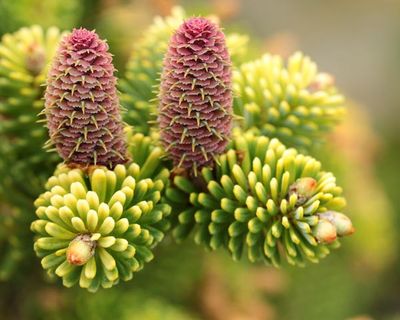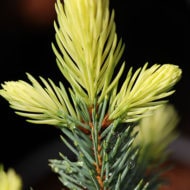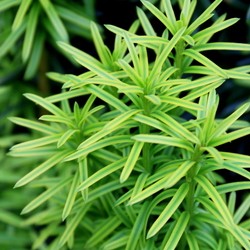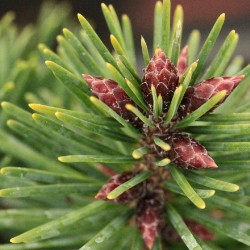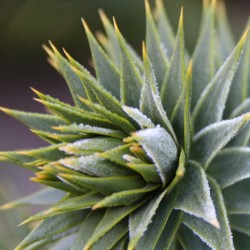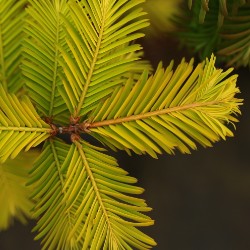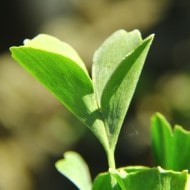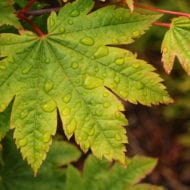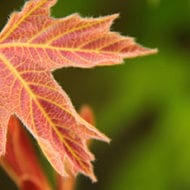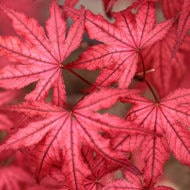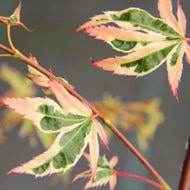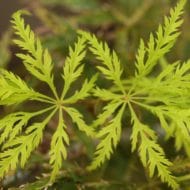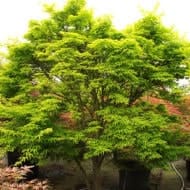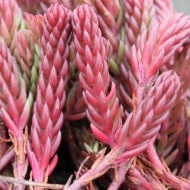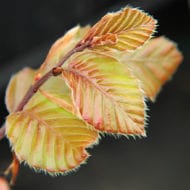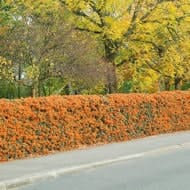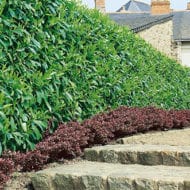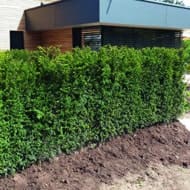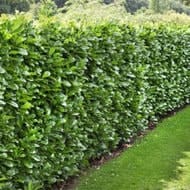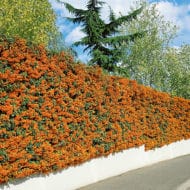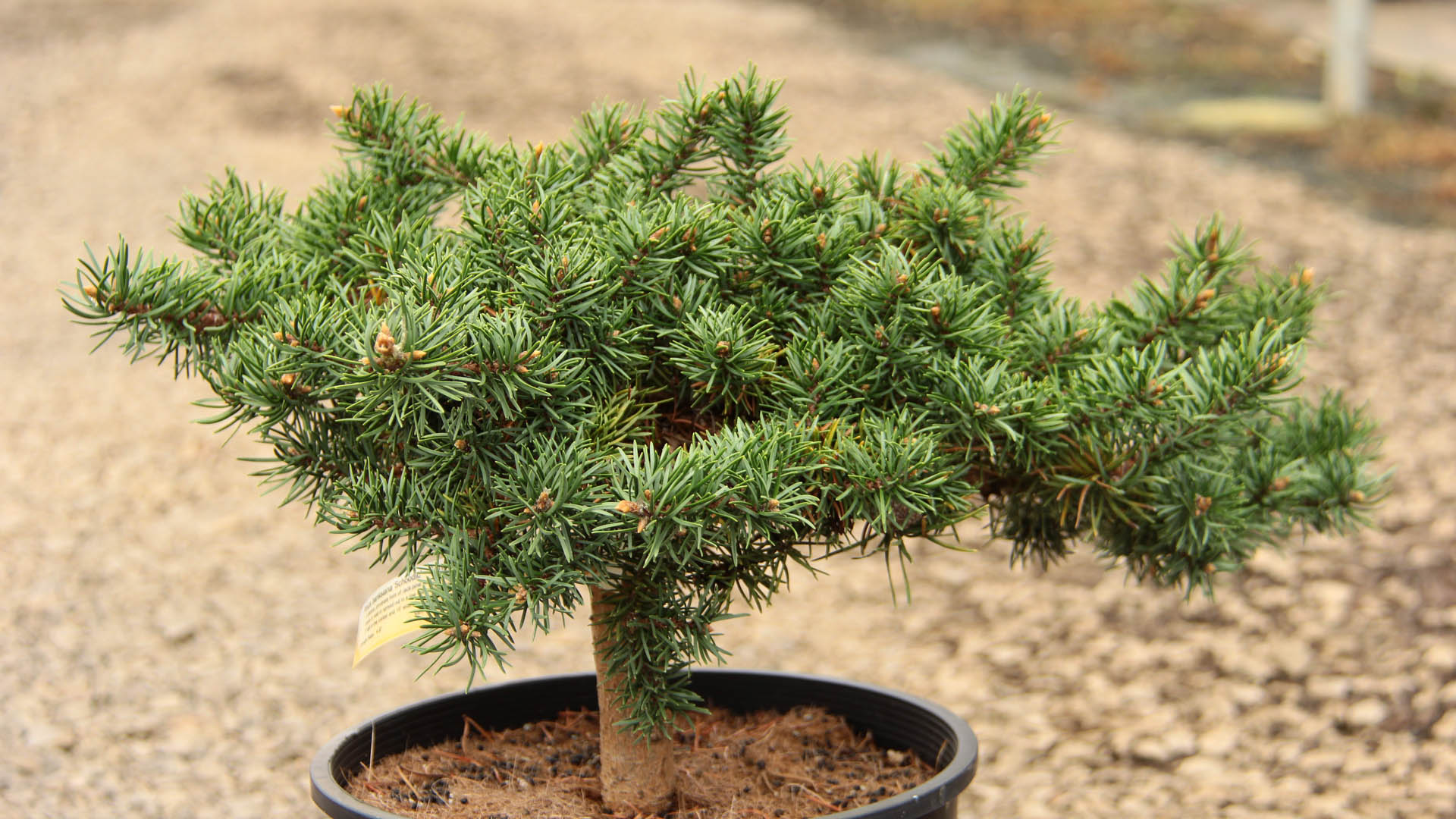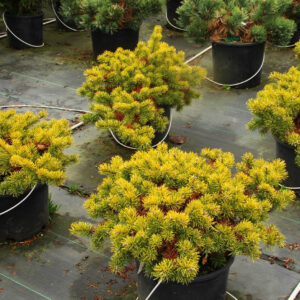Pinus banksiana ‘Schoodic’ Jack Pine
SKU: PinBa-Schoodic-0-0
Categories: Conifer Varieties Known to Produce Cones, Dwarf Conifers, Green Conifers, Our Plants, Pinus banksiana - Jack Pines, Spreading, Spreading/Prostrate, Zone 2, Zone 3, Zone 4, Zone 5, Zone 6, Zone 7, Zone 8
Tags: All Is Fixed, Hardiness Zone 2
Description
A dense, prostrate form of Jack pine with emerald green needles, this slow-growing seedling selection can drape down a wall or spread out in a low mass on a bank. Even after 30 years, a very old specimen only gets about 3′ tall in the center and 15′ wide.
USDA Hardiness Map
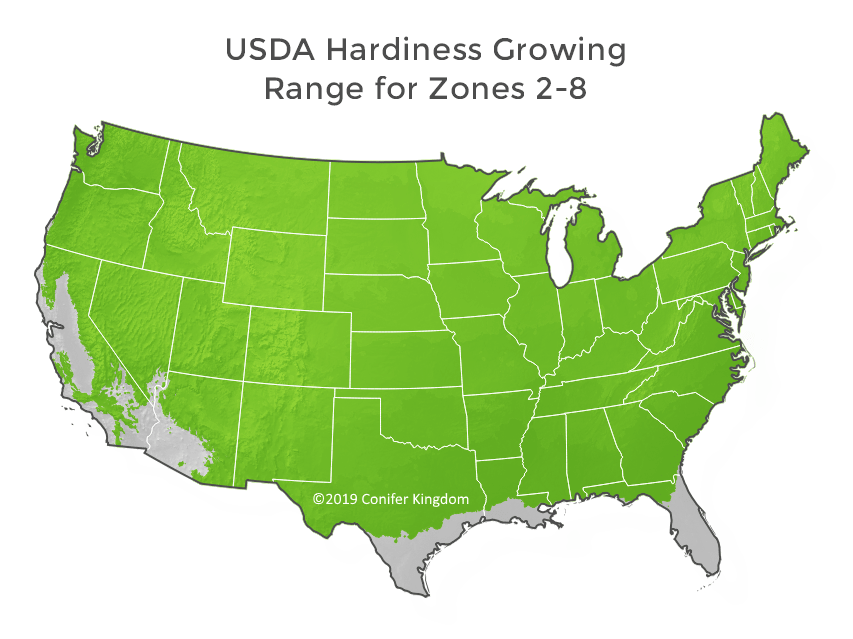
Plant Form

Additional information
| Weight | N/A |
|---|---|
| Latin Name | Pinus banksiana 'Schoodic' |
| Common name | Schoodic Jack Pine |
| SUN EXPOSURE | Sun |
| ANNUAL GROWTH | 4-8" |
| Growth Rate | Dwarf |
| HXW@10 YEARS | 1'x4' |
| Color | green |
| Form | Spreading/Prostrate |
| Hardiness Zone | Zones 2-8 |
| Growth Rate | |
| Color | |
| Form | |
| Your auto-detected zip code |  |
| hardiness zone based on zip code |  |
| You can also try another zip code |


